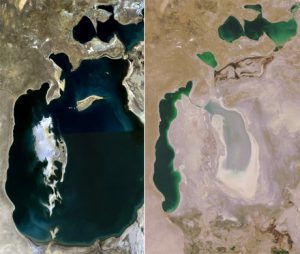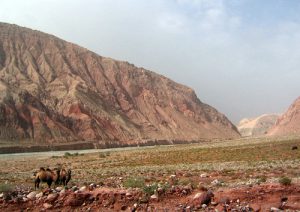Britons habitually discuss the changeable weather that, as a small island nation, torments us. This year’s Great Drought in North America may be announcing the time for a broader conversation. Even die-hard Republicans in the US are asking themselves whether climate change might be behind the volatile weather they are seeing, albeit with a conviction that nothing should be done about it if it is.
The problem is not just a local one. The interconnection of the world’s commodity markets means that a failed US maize harvest pushes up grain prices in Cairo. Food riots in grain-importing countries are possible later in the year. But neither is it quite a global one. This year’s wheat and rice crops are not affected by bad weather and globally there will be no grain shortage overall. It may not always be thus.
In the Anglo-Saxon world, climate change has pretty much disappeared from the public agenda. Attention is focused on the more pressing problems of the recession and the Euro crisis. When climate is mentioned, it is most likely to be in the context of the subsidies required for otherwise uneconomic wind turbines or the underwhelming outcome of the latest international climate conference. There is almost no discussion of how the gathering climate crisis will play out on the global stage.
There are reasons for this. Economic and political commentators believe themselves ill-equipped to handle the contentious complexities of climate change, although they have no fear of equally complex issues in macro-economics and geo-politics. In fact, it is not difficult to understand what might happen to the climate. The carbon dioxide concentration in the atmosphere is now a little under 400 parts per million and is increasing by two parts per million each year. Since the rate of emissions is itself increasing as the world economy expands, business-as-usual emissions are on course for a carbon dioxide concentration of 550 parts per million by about mid-century. This amount is double the pre-industrial concentration.
According to the science, doubling the carbon-dioxide concentration will increase temperatures by about three degrees Celsius. The scientifically accepted range of uncertainty for this increase is two to 4.5 degrees. This provides a sense of the risk of coming in higher or lower than the three-degree estimate would suggest in isolation.
When compared to a typical local daily temperature change, three degrees Celsius sounds small. The better comparison is with the long term difference in global average temperatures between two completely different states of the climate. For example, there is a six-degree Celsius difference between the last ice age and the temperate period since then. Three degrees is pretty big in this context.
It is now simple arithmetic to conclude that the chances of driving temperatures up at least three degrees Celsius are significant if the world economy continues to grow as usual for a few more decades. Political pledges to limit warming to two degrees Celsius are evidently of little substance in the absence of dramatic action to de-carbonise the economies of the major greenhouse-gas emitters, particularly the United States and China.
Warming doesn’t take place uniformly. In particular, the poles warm more quickly, as is evident from the rapid melting of the Arctic. Differential warming changes geographic temperature gradients, leading to shifts and changing volatility in weather patterns. The 0.8 degrees Celsius of current warming has made more likely the weather extremes that hit Russian wheat in 2010 and that are hitting US maize in 2012.
These events give a glimpse of how a few degrees warmer world might look. Weather changes and volatility from three degrees Celsius or more warming clearly have the potential to cut significantly yields of staple crops. This might happen around the world and for years at a time, notwithstanding our best efforts in agricultural adaptation.
The logic of climate arithmetic is that we may be seriously hungry in a few decades time, irrespective of the other problems climate change will cause. This could take us beyond any conceivable adaptation and into the realm of civil disorder.
So this is a possible future that may visit us well within the lifetimes of the readers of this article. What is to be done to avoid it?
The answer, quite possibly, is not a lot. Modern economies are built on fossil-fuelled growth. Developing economies are following exactly this pattern. Changing this model materially and quickly has proven to be impractical. Business-as-usual emissions growth is the consequence. This has the potential to produce a disaster which we will be powerless to redress.
None of this is new. In private scientists, business leaders and politicians are aware of this kind of analysis. Military planners are also aware of it. It is not hard to see how generals might think events could play out in different theatres if acute climate stresses become major drivers of events and compound the threat of civil disorder in politically or economically unstable countries.
These things are not much discussed publicly. Some ideas are too radical to be aired in the public domain without being shouted down as absurd or alarmist. They have to wait until their time has come. The Great Drought of 2012 may have brought that time a little closer. The time may be coming for us to have an earnest global conversation about the weather.
Howard Covington is a trustee of the UK’s national science museum in London and chairman of the UK’s national mathematics research institute in Cambridge, England.
Chris Rapley is a professor of climate science at University College London.
This article is based on an article that appeared in the Financial Times on August 5.
Homepage image by Greenpeace






